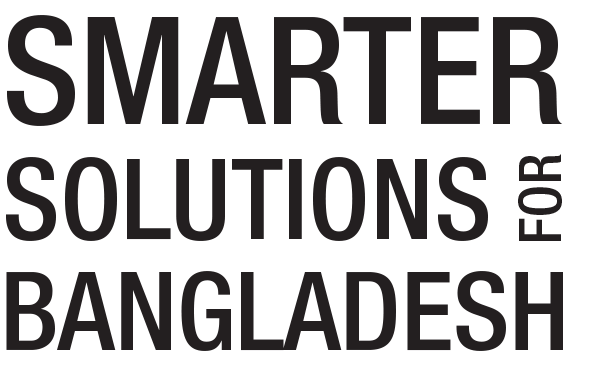How better technology can make city air cleaner and help save lives
by Bjorn Lomborg
During the dry season, Dhaka is one of the most polluted cities in the world. Air pollution levels during this period of the year reach 13-16 times higher than the international quality standard, and that outdoor air pollution kills 14,000 of the city’s residents annually.
The need to reduce air pollution in the capital may seem obvious. But using scarce resources to fight outdoor air pollution means less funding will be available from the national budget, international donors, or private citizens for other proposals that can do good.
Bangladesh Priorities, a cooperation with BRAC and dozens of the region’s and world’s top economists, promises to help prioritize the very best policies for the country.
Outdoor air pollution is often hard to deal with, because it comes from very many sources, each costly to clean up. But Dhaka is a unique situation because a large amount of the air pollution comes from a single source: brick production.
Each year, Dhaka’s more than 1,000 kilns manufacture 4 billion bricks for construction. These brick kilns emit up to 40 percent of all the fine-particulate air pollution in the capital and are responsible for an estimated 2,000 deaths each year. And because bricks can only be made during the dry season, kilns exacerbate air quality during the time of year when it is already worst.
Most brick-makers use what are known as fixed-chimney kilns, which are energy inefficient, highly polluting, and overwhelmingly burn poor-quality, dirty coal. Technologies to improve such kilns, however, promise great benefits—both for private owners and for the environment and society at large.
To decrease air pollution, kilns can either be replaced with entirely new ones that are cleaner and more efficient, or they can be retrofitted so that they burn cleaner and better. Our research examined a simple retrofitting into “improved zigzag” kilns, all the way to the top-of-the-line new hybrid Hoffman kilns.
| Strategy | Takas of benefits per taka spent |
|---|---|
| Retrofit kilns | 8 |
| New hybrid kilns | 3 |
Hybrid Hoffman kilns promise large overall benefits, but this technology requires great investment—Tk 160 million. Upgrading an existing fixed-chimney kiln into an improved zigzag kiln, on the other hand, is 40 times cheaper.
This retrofit turns out to be the most promising strategy, which does about 8 takas of good for every taka spent. If such zigzag kilns were adopted across Dhaka, it would cut air pollution from kilns by 40 percent, saving more than 800 lives per year. This would cost about Tk 408 million annually over the operating life of the kilns. But the benefits would be immense. Annual health benefits alone would equal Tk 1.7 billion. The reduction in carbon emissions would be bring Tk 80 million in benefits. Moreover, the private kiln operators would get a number of benefits, like higher quality bricks and lower energy consumption. In total, the benefits to investors and owners will add another Tk 1.4 billion.
It takes about three months to upgrade a fixed-chimney kiln into a zigzag kiln, and it costs Tk 4 million per kiln. The improved kilns heat bricks more efficiently because hot air blows over bricks in a zigzag pattern, which also heats them more evenly. These kilns reduce fuel consumption by one-fifth, which is one reason that an owner can pay back his or her investment in less than four years. The retrofit is also appealing because the process does not require relocating an existing kiln.
Due to the improved airflow design, zigzag kilns also produce better quality bricks that can be sold at higher prices, which makes the upgrade even more attractive to business owners. Kawsar Ahmed Mukul, a kiln owner in Savar who did the zigzag conversion in 2012, noted how the better technology decreases waste, too. After the conversion, he said, nearly 90 percent of bricks came out excellent quality, as opposed to the 60-65 percent from his old fixed-chimney kiln.
To achieve even greater environmental and financial benefits, however, kiln conversions and retrofits must eventually reach better technical and operational standards.
Hybrid Hoffman kilns have the potential to yield even greater overall benefits—replacing all kilns in Dhaka with this technology would yield health benefits worth Tk 2.5 billion per year. Lower carbon emissions would be worth benefits of Tk 161 million, in addition to the Tk 8.6 billion of value to owners in the form of more efficient brick production and improved quality of bricks. But the cost would be quite high, at Tk 3.3 billion annually. Each taka spent toward this end would do a little more than 3 takas of good, which is respectable, but not nearly as great as the 8 takas of good that retrofitting to improved zigzag kilns gives.
Even more could be done to reduce emissions from the brick-making sector. By switching away from poor-quality coal or relocating kilns to industrial parks located downwind from population centers, Dhaka could reduce outdoor air pollution by an even larger margin.
Spending money on outdoor air pollution control through better kilns can do about 8 takas of good for every taka spent. Earlier this week you saw how improved cookstoves can fight indoor air pollution, doing 5 takas of good for each taka spent. Do you think that these are some of the best investments Bangladesh can make for her future? Let your voice be heard on https://copenhagen.fbapp.io/outdoorairpriorities. We want to hear from you as we start the conversation about which strategies will do the most good for Bangladesh.
Dr. Bjorn Lomborg is president of the Copenhagen Consensus Center, ranking the smartest solutions to the world’s biggest problems by cost-benefit. He was ranked one of the world’s 100 most influential people by Time Magazine.
This article was originally posted in The Daily Star.


